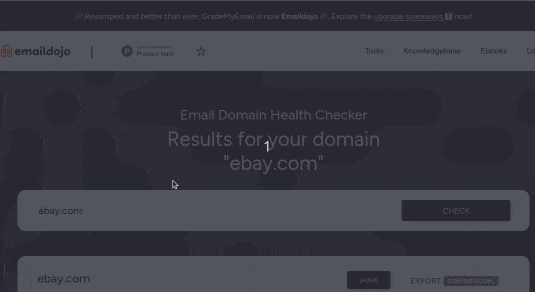How to Send an Email Notifications using Ansible?
Published on 2019-09-25· Updated on 2024-01-25
The author voluntarily contributed this tutorial as a part of Pepipost Write to Contribute program.
Introduction
Ansible is a radically simple IT automation engine that automates cloud provisioning, configuration management, application deployment, intra-service orchestration, and many other IT needs. Ansible comes with 20+ built-in modules and more than 3000+ functionalities. Here is the Ansible installation guide.
To install Ansible on RHEL/CentOS, run the following command:
$ sudo yum install ansible
Record the completion of any automated task, i.e., a playbook, and send a detailed report to the stakeholders so they act accordingly:
- After installation of any application
- After any activity in GIT
- After completion of any specific job
Ansible can send emails with attachments via:
- A local configured email server, like Postfix
- A remote email server with required access and credentials
- SMTP Services like Gmail, Mandrill, Mailjet, and SendGrid.
Click here to know more about the email module in Ansible.
Parameters
Let's understand the different parameters used for making an SMTP connection and to send an email.
1. SMTP Connection
host: The address of the mail server. Default is localhost. port: The port number of the mail server to connect. Mostly 25, 465, 587. username: If SMTP requires a username. password: If SMTP requires a password. timeout: Sets the timeout in seconds for connection attempts.
2. Connection Security
secure = always. Sends email only if connection is encrypted. It fails if the server doesn't accept the encrypted connection. secure = never. Before sending an email, the connection doesn't attempt to set up a secure SSL/TLS session. secure = try. Before trying to send an email, the connection attempts to set up a secure SSL/TLS session. secure = starttls. Before sending an email, the connection tries to upgrade to a secure SSL/TLS connection. The connection fails in case if unable to do so.
3. Email Headers
headers : A list of headers that needs to go with the message. from : The email address from which the mail is sent. Default is root. to : The email address(es) of the recipient to whom the mail sent. cc : The email address(es) of the recipient to whom the mail copied. bcc : The email address(es) of the recipient to whom the mail 'blind' copied.
4. Subject
subject : The subject of the email to send (mandatory). subtype : The minor mime type, can be either plain or HTML. The major type is always text.
5. Email Body
charset : The character set of the email to send. Default is UTF-8 body : The body of the email to send. attach : A list of files (full path) to attach to the mail. The content-type should be set to "application/octet-stream" for all the attached files.
Code to Send Email Without Attachment Using Gmail SMTP Server
- hosts:
- localhost
tasks:
- name: Sending an e-mail using Gmail SMTP servers
mail:
host: smtp.gmail.com
port: 587
username: [email protected]
password: your-password
to: recipient-name <recipient-email@domain>
subject: Ansible Report
body: System [[ ansible_hostname ]] has been successfully provisioned.
delegate_to: localhost
Code to Send Email With Attachment Using In-House Email Server
- hosts:
- localhost
tasks:
- name: Send Emails to a bunch of users, with Playbook Report as an attachment.
mail:
host: localhost
port: 25
subject: Ansible Playbook Report
body: This is an Email generated using Ansible after execution of task.
from: from-email@domain (Ansible Automates)
to:
- to-email-name-1 <to-email-1@domain>
- to-email-name-2 <to-email-1@domain>
cc: cc-name <cc-email@domain>
attach:
- <enter-path-of-your-file-to-be-attached>
headers:
- Reply-To=reply-to-email@domain
- X-Special="Write something special about this Email"
charset: us-ascii
delegate_to: localhost
Note: Please check the host-port connection using the ping/telnet command if you get an error saying “socket.error: [Errno 111] connection refused.”
You will now be able to send email notifications from your Ansible setup. If other errors pop up, refer to the below error list.
Possible Errors/Exceptions
Error 1: When the mailing service was not running on Port 25 OR, the server refused the connection, an exception occurred during the task execution. To see the full traceback, use -vvv. The error was:
socket.error: [Errno 111] Connection refused fatal: [localhost -> localhost]: FAILED! => array ( 'changed' => false, 'module_stderr' => 'Traceback (most recent call last): File ".ansible/tmp/ansible-tmp-1569048408.38-18927787866074/AnsiballZ_mail.py", line 114, in _ansiballz_main() File ".ansible/tmp/ansible-tmp-1569048408.38-18927787866074/AnsiballZ_mail.py", line 106, in _ansiballz_main invoke_module(zipped_mod, temp_path, ANSIBALLZ_PARAMS) File ".ansible/tmp/ansible-tmp-1569048408.38-18927787866074/AnsiballZ_mail.py", line 49, in invoke_module imp.load_module(\'__main__\', mod, module, MOD_DESC) File "/tmp/ansible_mail_payload_fiQfEe/__main__.py", line 397, in File "/tmp/ansible_mail_payload_fiQfEe/__main__.py", line 286, in main File "/usr/lib64/python2.7/smtplib.py", line 315, in connect self.sock = self._get_socket(host, port, self.timeout) File "/usr/lib64/python2.7/smtplib.py", line 290, in _get_socket return socket.create_connection((host, port), timeout) File "/usr/lib64/python2.7/socket.py", line 571, in create_connection raise err socket.error: [Errno 111] Connection refused', 'module_stdout' => '', 'msg' => 'MODULE FAILURE See stdout/stderr for the exact error', 'rc' => 1, )
Error 2: When Gmail account credentials were incorrect: The error was:
[localhost -> localhost]: FAILED! => {"changed": false, "msg": "Authentication to smtp.gmail.com:587 failed, please check your username and/or password", "rc": 1}
Error 3: When the file to be attached was either missing at a defined location or was inaccessible, an exception occurred during task execution. To see the full traceback, use -vvv. The error was:
IOError: [Errno 2] No such file or directory: '/tmp/ansible.logs' fatal: [localhost -> localhost]: FAILED! => array ( 'changed' => false, 'msg' => 'Failed to send mail: can\'t attach file /tmp/ansible.logs: [Errno 2] No such file or directory: \'/tmp/ansible.logs\'', 'rc' => 1, )
Error 4: When the recipient's email address was incorrect, an exception occurred during task execution. To see the full traceback, use -vvv. The error was:
SMTPRecipientsRefused: {'to-email-1': (550, '5.1.1 <to-email-1>: Recipient address rejected: User unknown in local recipient table')}
fatal: [localhost -> localhost]: FAILED! =>
array (
'changed' => false,
'msg' => 'Failed to send mail to \'to-email-1\': {\'to-email-1\': (550, \'5.1.1 : Recipient address rejected: User unknown in local recipient table\')}',
'rc' => 1,
)
Error 5: When any mandatory parameters are missing, e.g., "Subject" missing: The error was:
[localhost -> localhost]: FAILED! => {"changed": false, "msg": "missing required arguments: subject"}
Few important notification sending modules in Ansible:
- hipchat - send a message to HipChat
- jabber - send a message to a jabber user or chat room
- rabbitmq_publish - publish a message to a RabbitMQ queue
- rocketchat - send notifications to Rocket Chat
- say - make the computer speak
- slack - send Slack notifications
- telegram - send notifications via telegram
If you are facing any issues other than the ones listed in the above tutorial or have suggestions, please feel free to reach us at [email protected]
Excited about the latest in Bulk Email Marketing! Check out this insightful blog on Gmail and Yahoo updates in the email marketing landscape.
Explore the Blog - Here
Stay ahead of the game with valuable insights on optimizing your email campaigns! 📬
Grade My Email
Check your spam now?
Netcorecloud's toolkit is the solution to all your email problems.

You can also explore
Netcore connects & unifies your data across all sources, connects to your marketing channels and provides you with control over AI Powered automation and personalization.
Deploy emails that are
screenshot worthy!













Gaurang Acharya